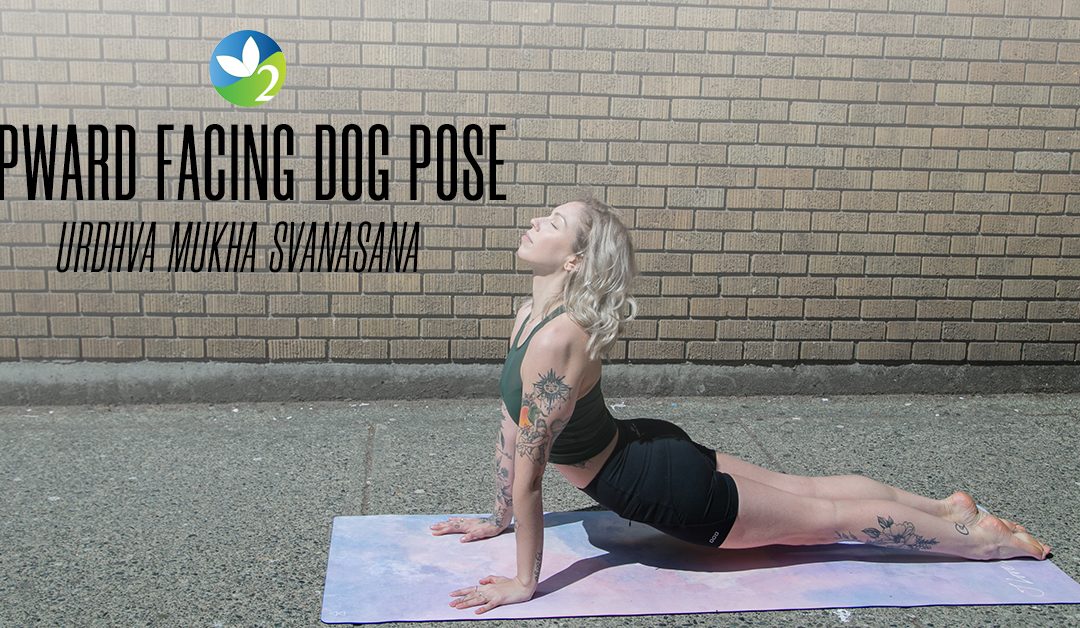Last week, we got into cobra pose, bhujangasana, which is very similar to upward-facing dog pose, urdvha mukha svanasana, our pose of the week for this week. You might see this pose in a vinyasa sequence during a freedom flow class.
Benefits:
Stretches the chest, shoulders, abdomen, and spine. Strengthens the back, abdominals, arms, and legs. Helps with seated postures, digestion, and fatigue.
How to:
- Start in a prone position with your belly on the mat, your feet together behind you, and your hands on the floor under your shoulders.
- Make sure your palms are pressing into the mat with your fingers spread out wide. Press the tops of your feet into the floor, keeping a long line in your legs, and untuck your toes.
- As you breathe, slowly lift your through your entire body, bringing everything except for the palms of your hands and the tops of your feet off the mat.
- Straighten your arms, but be mindful not to lock out your elbows. Try to keep the creases in your elbows pointing forward. Relax your shoulders away from your ears, and roll them back as you gently push your chest forward.
- Squeeze through your thighs and firm your buttocks to maintain the elevated position in your legs (they should be a few inches off the mat if possible).
- Keep your gaze wherever is comfortable while maintaining the length in your neck.
- Release from the pose by coming back into child’s pose or, as in a vinyasa sequence, pressing back into downward facing dog.
Modify it:
Modify this pose by coming into cobra pose until you’re ready to lift through your legs (keep your legs on the floor and lift through your chest and belly). As you’ll notice, the poses are quite similar aside from the positioning of the legs and pelvis. In a vinyasa sequence, there is always the option to swap upward facing dog for cobra pose until you feel ready.

